
The Hidden Gem of Nevada: Ruby Mountains
Discover the Ruby Mountains in Nevada: A pristine alpine paradise offering hiking, wildlife viewing, and breathtaking scenery in a serene wilderness setting.
The Ruby Mountains, often referred to as Nevada's Swiss Alps, are a hidden gem in the northeastern part of the state. These mountains are known for their stunning alpine scenery, crystal-clear lakes, and diverse wildlife. The range stretches over 80 miles and offers a variety of recreational activities such as hiking, fishing, and camping. Lamoille Canyon, the crown jewel of the Ruby Mountains, features a scenic drive that winds through the canyon's impressive granite peaks and lush meadows. This drive is particularly breathtaking in the fall when the leaves turn to brilliant shades of red and gold. For adventure seekers, the Ruby Crest Trail offers a challenging yet rewarding hike, providing panoramic views of the surrounding landscape. The Ruby Mountains are also home to the elusive Himalayan snowcock, a bird species introduced from Asia. Birdwatchers and nature enthusiasts often visit the area in hopes of catching a glimpse of this rare bird. Winter sports enthusiasts will find the Ruby Mountains to be a paradise for backcountry skiing and snowshoeing. Whether you're looking to explore the great outdoors, enjoy the tranquility of nature, or simply take in the stunning vistas, the Ruby Mountains offer something for everyone. This unspoiled wilderness area provides a perfect escape from the hustle and bustle of everyday life.
Local tips in Ruby Mountains
- Best time to visit is late spring to early fall for optimal weather and access to trails.
- Bring plenty of water and sun protection; the high elevation can be deceivingly harsh.
- Be prepared for variable weather conditions; mountain weather can change rapidly.
- Check for road closures and trail conditions at the local ranger station before heading out.
- Pack out all trash and follow Leave No Trace principles to preserve the natural beauty.
The Hidden Gem of Nevada: Ruby Mountains
The Ruby Mountains, often referred to as Nevada's Swiss Alps, are a hidden gem in the northeastern part of the state. These mountains are known for their stunning alpine scenery, crystal-clear lakes, and diverse wildlife. The range stretches over 80 miles and offers a variety of recreational activities such as hiking, fishing, and camping. Lamoille Canyon, the crown jewel of the Ruby Mountains, features a scenic drive that winds through the canyon's impressive granite peaks and lush meadows. This drive is particularly breathtaking in the fall when the leaves turn to brilliant shades of red and gold. For adventure seekers, the Ruby Crest Trail offers a challenging yet rewarding hike, providing panoramic views of the surrounding landscape. The Ruby Mountains are also home to the elusive Himalayan snowcock, a bird species introduced from Asia. Birdwatchers and nature enthusiasts often visit the area in hopes of catching a glimpse of this rare bird. Winter sports enthusiasts will find the Ruby Mountains to be a paradise for backcountry skiing and snowshoeing. Whether you're looking to explore the great outdoors, enjoy the tranquility of nature, or simply take in the stunning vistas, the Ruby Mountains offer something for everyone. This unspoiled wilderness area provides a perfect escape from the hustle and bustle of everyday life.
When is the best time to go to Ruby Mountains?
Iconic landmarks you can’t miss
Lamoille Canyon Scenic Byway
Explore the breathtaking vistas and diverse wildlife of Lamoille Canyon Scenic Byway, a top tourist attraction nestled in Nevada's Ruby Mountains.

Lamoille Canyon
Experience the breathtaking beauty of Lamoille Canyon, a natural ravine in Nevada perfect for hiking, photography, and exploring the great outdoors.

Ruby Mountains Wilderness (Duka Doya)
Explore the breathtaking Ruby Mountains Wilderness in Nevada, a paradise for adventure seekers and nature lovers with stunning landscapes and diverse wildlife.

Ruby Dome
Explore the breathtaking Ruby Dome in Nevada, a hiker's paradise offering stunning views and challenging trails in the majestic Ruby Mountains.
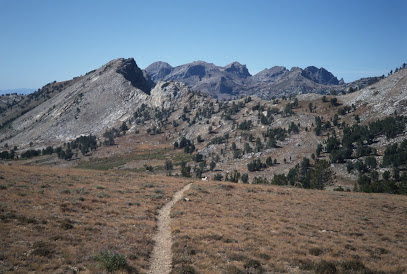
Unmissable attractions to see
Gold Dust West Elko
Discover the excitement of Gold Dust West Elko, a premier casino and lounge offering endless entertainment and delectable dining in the heart of Nevada.

California Trail Interpretive Center
Explore the legacy of the California Trail at the Interpretive Center, where history comes alive through engaging exhibits and breathtaking hikes.

South Fork State Recreation Area
Experience the breathtaking landscapes and outdoor adventures at South Fork State Recreation Area, a serene nature escape in Nevada.

Northeastern Nevada Museum
Explore the rich history and natural beauty of Northeastern Nevada at the Northeastern Nevada Museum in Elko - a must-see for every traveler.

Lamoille Canyon Scenic Byway
Discover the stunning landscapes and rich wildlife of Lamoille Canyon Scenic Byway in Nevada's National Forest, a must-visit for nature lovers and adventure seekers.

Angel Park
Explore the natural beauty of Angel Park in Elko, Nevada, a perfect destination for relaxation, recreation, and family fun.

Peace Park
Discover the tranquil beauty of Peace Park in Elko, Nevada. A perfect escape for nature lovers and families seeking relaxation and recreation.

The Commercial Casino
Discover the excitement of gaming and the rich history at the Commercial Casino, a beloved landmark in Elko, Nevada, perfect for tourists seeking fun and culture.
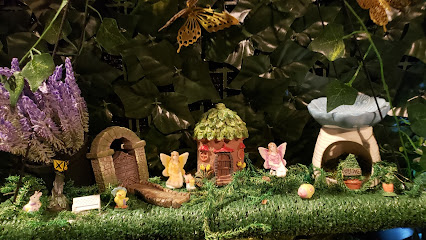
Western Folklife Center
Explore the vibrant culture of the American West at the Western Folklife Center in Elko, Nevada, where folklore, music, and history come alive.

Thomas Canyon Campground
Discover the serene beauty of Thomas Canyon Campground in Nevada, a perfect getaway for families and outdoor enthusiasts alike.

Commercial Fun Center
Experience the ultimate family fun at Elko's Commercial Fun Center, a vibrant amusement park filled with thrilling rides and exciting arcade games.

Wild Horse State Recreation Area
Explore the breathtaking landscapes and wild horses at Wild Horse State Recreation Area, a serene natural escape in Nevada's wilderness.

Johnny Appleseed Park
Experience the beauty and serenity of Johnny Appleseed Park, a peaceful retreat in Elko, Nevada, perfect for relaxation and outdoor fun.

Ruby Lake National Wildlife Refuge
Explore the natural beauty and diverse wildlife of Ruby Lake National Wildlife Refuge, a tranquil haven for nature lovers in Nevada.

Trail Of The 49ers, Interpretive Center
Explore the Trail Of The 49ers Interpretive Center, a museum celebrating the pioneers of the California Trail in Wells, Nevada.

Essential places to dine
Coffee Mug
Discover family-friendly dining at Coffee Mug in Elko – where delicious breakfasts meet exceptional coffee in a warm atmosphere.

The Star Hotel Basque Dining
Experience authentic Basque cuisine in a family-friendly atmosphere at The Star Hotel in Elko - where flavor meets tradition.
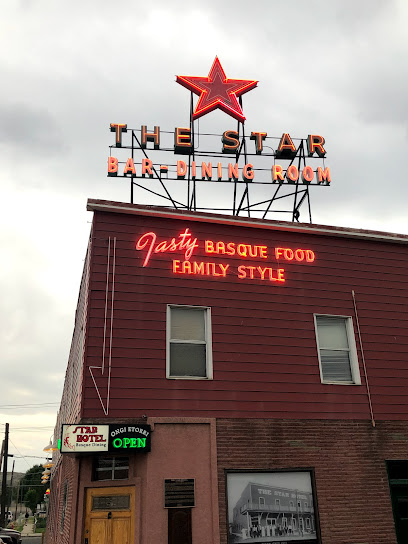
WINGERS Restaurant
Discover WINGERS Restaurant in Elko for mouthwatering American cuisine, including famous chicken wings and burgers in a lively atmosphere.

Odeh's Mediterranean Restaurant
Discover authentic Mediterranean cuisine at Odeh's Restaurant in Elko - where every dish tells a story.

McDonald's Elko Highway
Experience the classic flavors of fast food at McDonald's Elko Highway – your go-to stop while traveling through Nevada's stunning landscapes.

Jr's Bar & Grill
Discover delicious American cuisine at Jr's Bar & Grill in Elko, Nevada - where great food meets a welcoming atmosphere.
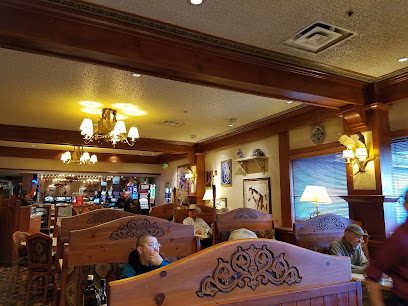
Luciano's
Experience authentic Italian cuisine at Luciano's in Elko; where every dish tells a story of tradition and flavor.

McDonald's Idaho Street
Experience fast food convenience at McDonald's Idaho Street in Elko—perfect for breakfast, lunch, or dinner during your travels.

Wendy's
Savor delicious fast food at Wendy's in Elko - fresh burgers, salads, and sweet treats await you!

Dreez
Discover Dreez in Elko - where delightful breakfasts meet warm hospitality in an inviting atmosphere.

Costa Vida
Experience authentic Mexican cuisine at Costa Vida in Elko - where fresh ingredients meet flavorful dishes in a fast-casual setting.

Pizza Barn Elko
Experience the taste of Italy at Pizza Barn Elko – where every bite is crafted with passion and tradition.

Stockmen's Casino Coffee Shop
Savor hearty breakfasts at Stockmen's Casino Coffee Shop in Elko, Nevada – where delicious food meets a welcoming atmosphere.

Blind Onion Pizza
Experience delicious pizzas, homemade ice cream, and fun arcade games at Blind Onion Pizza in Elko - the ultimate family-friendly destination.
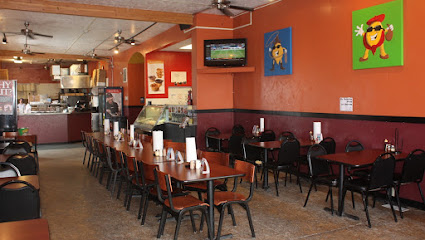
O'Carroll's
Experience delightful grilled cuisine at O'Carroll's in Lamoille—where rustic charm meets unforgettable flavors amidst stunning scenery.
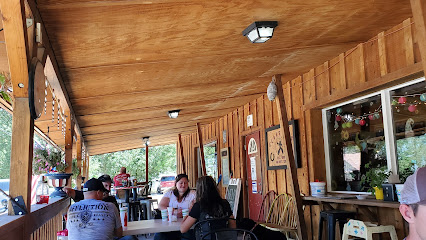
Markets, malls and hidden boutiques
Walmart Supercenter
Discover unbeatable savings and a vast selection at Walmart Supercenter in Elko, Nevada—your go-to spot for all shopping needs.

C-A-L Ranch Stores
Explore the ultimate outdoor sports store in Elko, Nevada, featuring camping gear, pet supplies, and western apparel for every adventurer.

Sunrise Shopping Center
Experience shopping bliss at Sunrise Shopping Center in Elko, Nevada, where diverse stores and dining options await every visitor.

Cool Beans Coffee and Ice Cream
Discover Cool Beans Coffee and Ice Cream in Elko, NV - your go-to spot for exceptional coffee and delightful ice cream treats.

Roy's Inc
Explore Roy's Inc in Elko, NV – Your go-to grocery store for fresh produce, local goods, and a taste of the community spirit.

Mudd Hutt
Discover the charm of Mudd Hutt, a delightful coffee shop in Spring Creek, NV, offering artisanal brews and homemade treats in a cozy setting.

Kohl's
Discover unbeatable deals and a diverse range of products at Kohl's Elko, your go-to department store for fashion and home essentials.

Family Dollar
Explore unbeatable savings and a wide variety of products at Family Dollar in Elko, the ultimate budget-friendly shopping destination.

Ruby Mountian Aquarium supply
Explore a vibrant selection of exotic fish and aquarium supplies at Ruby Mountain Aquarium Supply in Elko, NV, perfect for aquatic enthusiasts.

Ruby Mountain Resource Center
Explore the Ruby Mountain Resource Center in Elko, NV, where unique thrift finds meet community spirit in a charming shopping experience.

Spring Creek Plaza
Discover the local charm and vibrant shopping experience at Spring Creek Plaza, the heart of Spring Creek, Nevada.

Chique Unique & Antiques
Explore a treasure trove of vintage antiques and unique collectibles at Chique Unique & Antiques in Elko, Nevada, where history comes alive.

Ruby Mountains
Explore the Ruby Mountains in Nevada, a majestic mountain range offering stunning views, diverse wildlife, and endless outdoor adventures.

Princess and a Redneck
Explore unique gifts and local crafts at Princess and a Redneck in Elko, Nevada - a treasure trove for tourists seeking memorable souvenirs.

Hayley's Gift Shop
Explore Hayley's Gift Shop in Elko, NV, for unique gifts and local treasures that capture the spirit of Nevada.

Essential bars & hidden hideouts
Gold Dust West Elko
Discover the excitement of Gold Dust West Elko, where gaming, dining, and vibrant entertainment come together in the heart of Nevada.

WINGERS Restaurant
Discover the flavors of America at WINGERS Restaurant, where delicious wings, burgers, and salads await in Elko, NV.

Matties Taphouse and Grill
Savor the best grilled dishes and local craft beers at Matties Taphouse and Grill, a culinary jewel in Elko, Nevada.

Muley's Bar & Family Grill
Discover Muley's Bar & Family Grill in Spring Creek: where hearty breakfasts meet classic grill favorites in a family-friendly atmosphere.

Machi's Saloon & Grill
Experience the best of American cuisine at Machi's Saloon & Grill in Elko, Nevada, where hearty dishes and a welcoming atmosphere await.

O'Carroll's
Experience the flavors of Lamoille, Nevada at O'Carroll's, a grill that serves up mouthwatering dishes in a warm, inviting atmosphere.

Double Dice RV Park Bar & Grill
Discover the vibrant Double Dice RV Park Bar & Grill in Elko, NV, where delicious food and exciting sports come together in a welcoming atmosphere.

Scoreboard Casino and Restaurant
Immerse yourself in excitement and flavor at Scoreboard Casino and Restaurant in Spring Creek, Nevada, where gaming meets gourmet dining.

Charlee's Bar
Discover the vibrant nightlife at Charlee's Bar in Elko, NV, where karaoke, drinks, and friendly vibes come together for an unforgettable experience.

Stray Dog Pub & Cafe
Discover the warmth of Stray Dog Pub & Cafe in Elko, NV, where good food, great drinks, and friendly faces await.

Silver Dollar Club
Experience the lively atmosphere and local charm at Silver Dollar Club, Elko's go-to bar for unforgettable nights.

Goldie's
Discover Goldie's in Elko: a cocktail bar where vibrant nightlife meets expertly crafted drinks in a lively atmosphere.

Lone Mountain Station
Experience the warmth of American cuisine at Lone Mountain Station, a charming restaurant and gas station in the heart of Elko, Nevada.

Duncan LittleCreek Gallery & the Gallery Bar
Discover the perfect blend of art and nightlife at Duncan LittleCreek Gallery & the Gallery Bar, an artistic haven for wine and cocktail lovers in Elko.

Watering Hole
Discover the Watering Hole: a cozy bar in Spring Creek, NV, offering a friendly atmosphere and a wide selection of drinks for all tastes.

Local Phrases about Ruby Mountains
-
- HelloHowdy
[haʊ-di] - GoodbyeSee ya
[si jə] - YesYup
[yʌp] - NoNah
[nɑ] - Please/You're welcomePlease
[pliːz] - Thank youThanks
[θæŋks] - Excuse me/SorryPardon
[pɑrdn] - How are you?Howdy
[haʊ-di] - Fine. And you?Fine. You?
[faɪn ju] - Do you speak English?Ya speak English?
[jə spiːk ɪŋɡlɪʃ] - I don't understandI don't get it
[aɪ doʊnt ʌndərˈstænd]
- HelloHowdy
-
- I'd like to see the menu, pleaseCan I see the menu?
[kæn aɪ siː ðə ˈmɛnjuː] - I don't eat meatI don't eat meat
[aɪ doʊnt it mit] - Cheers!Cheers!
[tʃɪrz] - I would like to pay, pleaseI'll pay now
[aɪl peɪ naʊ]
- I'd like to see the menu, pleaseCan I see the menu?
-
- Help!Help!
[hɛlp] - Go away!Get out!
[ɡɛt aʊt] - Call the Police!Call the Cops!
[kɔl ðə kɒps] - Call a doctor!Get a doc!
[ɡɛt ə dɑk] - I'm lostI'm lost
[aɪm lɒst] - I'm illI'm sick
[aɪm sɪk]
- Help!Help!
-
- I'd like to buy...I wanna buy...
[aɪ ˈwɑnə baɪ] - I'm just lookingJust browsing
[dʒʌst ˈbraʊzɪŋ] - How much is it?How much?
[haʊ mʌtʃ] - That's too expensiveToo pricey
[tuː ˈpraɪsi] - Can you lower the price?Can you do a deal?
[kæn jʊ duː ə dil]
- I'd like to buy...I wanna buy...
-
- What time is it?What time?
[wʌt taɪm] - It's one o'clockIt's one
[ɪts wʌn] - Half past (10)Half ten
[hɑf tɛn] - MorningMorning
[ˈmɔrnɪŋ] - AfternoonAfternoon
[ˌæftərˈnun] - EveningEvening
[ˈivnɪŋ] - YesterdayYesterday
[ˈjɛstərˌdeɪ] - TodayToday
[təˈdeɪ] - TomorrowTomorrow
[təˈmɑroʊ] - 1One
[wʌn] - 2Two
[tuː] - 3Three
[θriː] - 4Four
[fɔr] - 5Five
[faɪv] - 6Six
[sɪks] - 7Seven
[ˈsɛvən] - 8Eight
[eɪt] - 9Nine
[naɪn] - 10Ten
[tɛn]
- What time is it?What time?
-
- Where's a/the...?Where's the...?
[wɛrz ðə] - What's the address?What's the address?
[wʌts ðə əˈdrɛs] - Can you show me (on the map)?Show me (on the map)
[ʃoʊ mi (ɒn ðə mæp)] - When's the next (bus)?When's the next (bus)?
[wɛnz ðə nɛkst (bʌs)] - A ticket (to ....)One ticket (to ....)
[wʌn ˈtɪkɪt (tu ....)]
- Where's a/the...?Where's the...?
History of Ruby Mountains
-
The Ruby Mountains have been home to Native American tribes for thousands of years, particularly the Western Shoshone people. These indigenous communities relied on the region's rich resources for hunting, fishing, and gathering. Their cultural imprints can be seen in petroglyphs and ancient artifacts scattered throughout the area.
-
In the late 19th century, the Ruby Mountains witnessed a surge of activity due to the discovery of gold and other precious minerals. Prospectors and miners flocked to the area, establishing mining camps and small towns. This period of intense mining activity brought significant economic development but also led to substantial environmental changes.
-
In 1906, the Ruby Mountains National Forest was established to protect the unique ecosystems and landscapes of the region. This designation marked the beginning of conservation efforts aimed at preserving the area's natural beauty and biodiversity, ensuring that future generations could enjoy its pristine wilderness.
-
The Ruby Mountains region saw an influx of Basque immigrants in the late 19th and early 20th centuries. These settlers brought with them their distinct culture, traditions, and pastoral lifestyle. Their influence is still evident today in local festivals, cuisine, and the iconic Basque sheepherder camps that dot the landscape.
-
During World War II, the Ruby Mountains served as a training ground for the 10th Mountain Division, a specialized unit of the U.S. Army trained in mountain warfare. The rugged terrain provided an ideal setting for the soldiers to hone their skills, which would later be crucial in battles in the Italian Alps.
-
In recent decades, there have been renewed efforts to conserve the Ruby Mountains' unique habitats and species. Initiatives such as the designation of wilderness areas and the implementation of sustainable tourism practices aim to balance human activity with ecological preservation, ensuring that the Ruby Mountains remain a vibrant and healthy environment.
Ruby Mountains Essentials
-
The Ruby Mountains are located in northeastern Nevada, United States. The nearest major airport is Elko Regional Airport (EKO), which has flights connecting from Salt Lake City International Airport (SLC). From Elko, the Ruby Mountains are approximately 30 miles away and can be reached by rental car or taxi. Alternatively, for those traveling by road, Interstate 80 runs through Elko, making it accessible from various parts of Nevada and neighboring states.
-
Transportation within the Ruby Mountains is best managed by renting a car, as public transportation options are extremely limited. Rental cars are available at Elko Regional Airport. For those interested in exploring the backcountry, a 4WD vehicle is recommended. During winter, ensure your vehicle is equipped for snow and ice. Guided tours are also available and highly recommended for those unfamiliar with mountain terrain.
-
The official currency is the United States Dollar (USD). Credit and debit cards are widely accepted in Elko and at major attractions, but it's advisable to carry some cash for use in more remote areas, small shops, and local businesses. ATMs are available in Elko, and it's a good idea to withdraw sufficient cash before venturing into the Ruby Mountains.
-
The Ruby Mountains are generally safe for tourists, but standard precautions should be taken. Avoid hiking alone, especially in remote areas, and always inform someone of your plans. Be aware of wildlife, including bears and mountain lions, and follow local guidelines for safety. Elko is the nearest town, and while it is generally safe, it is wise to avoid poorly lit areas at night and keep an eye on your personal belongings.
-
In case of emergency, dial 911 for immediate assistance. Elko has medical facilities, including Northeastern Nevada Regional Hospital. It is advisable to carry a basic first aid kit and have travel insurance that covers medical emergencies. For minor ailments, pharmacies are available in Elko. When hiking, always carry a map, compass, and sufficient water and food supplies.
-
Fashion: Do wear comfortable, weather-appropriate clothing and sturdy hiking boots. Don't wear flip-flops or sandals when hiking. Religion: Do respect any local customs or traditions you may encounter, though the Ruby Mountains are primarily a natural attraction. Public Transport: Do note that public transport is minimal; renting a car is essential. Greetings: Do greet people with a friendly hello or nod. Eating & Drinking: Do try local cuisine in Elko; don't leave food waste in natural areas to avoid attracting wildlife.
-
To experience the Ruby Mountains like a local, visit during the fall to witness the stunning autumn foliage. Engage with local guides who can share the rich history and natural secrets of the area. Don't miss the opportunity to hike the Lamoille Canyon, often called the 'Grand Canyon of Nevada,' and try fishing in the Ruby Lake National Wildlife Refuge.
Nearby Cities to Ruby Mountains
-
Things To Do in Twin Falls
-
Things To Do in Mountain Home
-
Things To Do in Delta
-
Things To Do in Ogden
-
Things To Do in Salt Lake City
-
Things To Do in Provo
-
Things To Do in Logan
-
Things To Do in Park City
-
Things To Do in Boise
-
Things To Do in Nampa
-
Things To Do in Heber City
-
Things To Do in Ketchum
-
Things To Do in Pocatello
-
Things To Do in Sun Valley
-
Things To Do in Richfield









